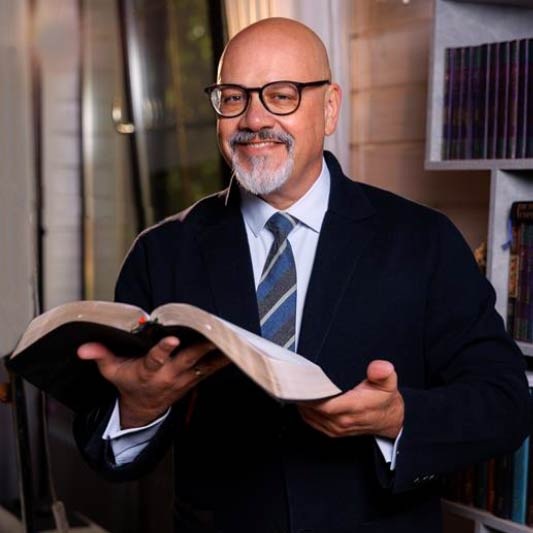The Gospel of Luke uses Hebrew names and theological imagery to present Mary as a symbol of “Virgin Israel,” a concept deeply rooted in Jewish scripture and tradition. By connecting Mary to Old Testament figures like Miriam and framing her as an ideal representative of God’s people, Luke underscores her Jewish identity and her pivotal role in salvation history. This article examines the significance of Hebrew names, particularly Mary’s connection to Miriam, and the theological implications of portraying her as Virgin Israel.
The name Mary, derived from the Hebrew Miriam, carries profound significance in Luke’s Gospel. In the Old Testament, Miriam, the sister of Moses and Aaron, is a prophetess who witnesses God’s deliverance of Israel (Exodus 15:20-21). Her faith in God’s saving power, displayed when she leads the women in a jubilant dance after the Red Sea crossing, prefigures Mary’s role in the New Testament. Luke 1:28-30 records Gabriel addressing Mary as “favored one,” echoing the divine favor shown to Miriam during Israel’s exodus. Mary’s response, “Behold, the Lord’s servant; may it be done to me according to your word” (Luke 1:38), reflects the same trust and obedience as her namesake, who entrusted Moses to God’s care (Exodus 2:1-10).
The connection between Mary and Miriam is obscured in English translations, which render the Hebrew Miriam and the Greek Mariam/Mary inconsistently. This linguistic divide can mask the intended parallels, as the New Testament was written in Greek, while the Old Testament is translated from Hebrew. By recognizing Mary as Miriam, we see her as a continuation of the prophetic tradition of faithful Jewish women who trust in God’s redemptive acts. Her Magnificat (Luke 1:46-55) mirrors Miriam’s song of praise, celebrating God’s mighty deeds and His faithfulness to Israel’s covenant (Exodus 15:21).
The concept of “Virgin Israel” further enriches Mary’s portrayal. In Hebrew scripture, Israel is frequently depicted as a virgin, symbolizing purity and covenantal faithfulness (Jeremiah 31:4; Amos 5:2; Isaiah 37:22). The Septuagint’s translation of Isaiah 7:14, rendering the Hebrew “almah” (young woman) as “parthenos” (virgin), likely reflects this theological tradition. Jewish translators may have seen the “young woman” as a symbol of Israel, whose faithfulness culminates in the birth of the Messiah. Luke adopts this imagery, presenting Mary as the embodiment of Virgin Israel—obedient, faithful, and chosen to bear the promised Savior.
The controversy over Isaiah 7:14, often cited in Christian apologetics to support Mary’s virginity, is less divisive when viewed in this light. The Hebrew “almah” denotes a young woman, not necessarily a virgin, but the Septuagint’s “parthenos” aligns with the prophetic depiction of Israel as a virgin. Luke’s use of this imagery suggests that Mary represents the faithful remnant of Israel, whose obedience fulfills God’s covenantal promises. Her virginity, while significant, is secondary to her role as a symbol of Israel’s purity and trust in God.
Mary’s connection to the Davidic kingdom reinforces this symbolism. Gabriel’s announcement that Jesus will inherit “the throne of His father David” and “reign over the house of Jacob forever” (Luke 1:32-33) ties Mary to the messianic promises of 2 Samuel 7:12-16. As a descendant of David through Joseph (Luke 1:27), Mary becomes the vessel through which God’s covenant with David is fulfilled. Her role as Virgin Israel thus bridges the Abrahamic and Davidic covenants, uniting Israel’s past with its messianic future.
The names of other figures in Luke’s narrative, such as Elizabeth (Elisheva, meaning “My God is faithful”), further emphasize this Jewish continuity. Elizabeth, like the Old Testament Elisheva, wife of Aaron, represents priestly faithfulness, complementing Mary’s prophetic role. The interplay of these names—Miriam and Elisheva—evokes the exodus narrative, where faithful women played key roles in God’s deliverance. Luke’s use of Hebrew names thus serves as a theological marker, grounding the Gospel in Israel’s covenantal history.
Mary’s encounter with Elizabeth (Luke 1:39-45) underscores her role as Virgin Israel. Elizabeth’s Spirit-filled recognition of Mary as “the mother of my Lord” (Luke 1:43) and “blessed among women” (Luke 1:42) elevates Mary as the pinnacle of Israel’s faithfulness. This moment parallels the Old Testament’s depiction of Israel as God’s chosen, set apart for His redemptive purposes. Mary’s Magnificat, with its echoes of Hannah’s prayer (1 Samuel 2:1-10), further aligns her with Israel’s tradition of praising God for His justice and mercy.
The manger scene in Luke 2:7 also carries Jewish significance, reinforcing Mary’s role as Virgin Israel. The feeding trough, located in Bethlehem (“House of Bread”), symbolizes Jesus as the bread of life, fulfilling Jewish expectations of messianic provision (John 6:35). Mary’s act of laying Jesus in the manger foreshadows His sacrificial role, linking her to the Passover lamb and Israel’s redemption. This imagery portrays Mary as the faithful mother of the Messiah, embodying Israel’s hope.
Mary’s Jewish identity, as Miriam and Virgin Israel, is central to Luke’s theological vision. Her name and actions connect her to the prophetic and covenantal traditions of Israel, presenting her as the ideal disciple who trusts in God’s promises. Through her, Luke bridges the Old and New Testaments, showing that the Messiah’s birth fulfills Israel’s hopes while extending salvation to all nations. Mary’s story, rooted in her Jewish faith, invites readers to see her as a model of obedience and trust in God’s redemptive plan.






Dr Eli indeed Blessed with this article about Mary’s name ( in Hebrew and Greek) and Elizabeth. In my own experience in life: you / I will became my / your name, we also choose our children’s names accordingly. Thank you.
Good to hear from you, Emily! Blessings!